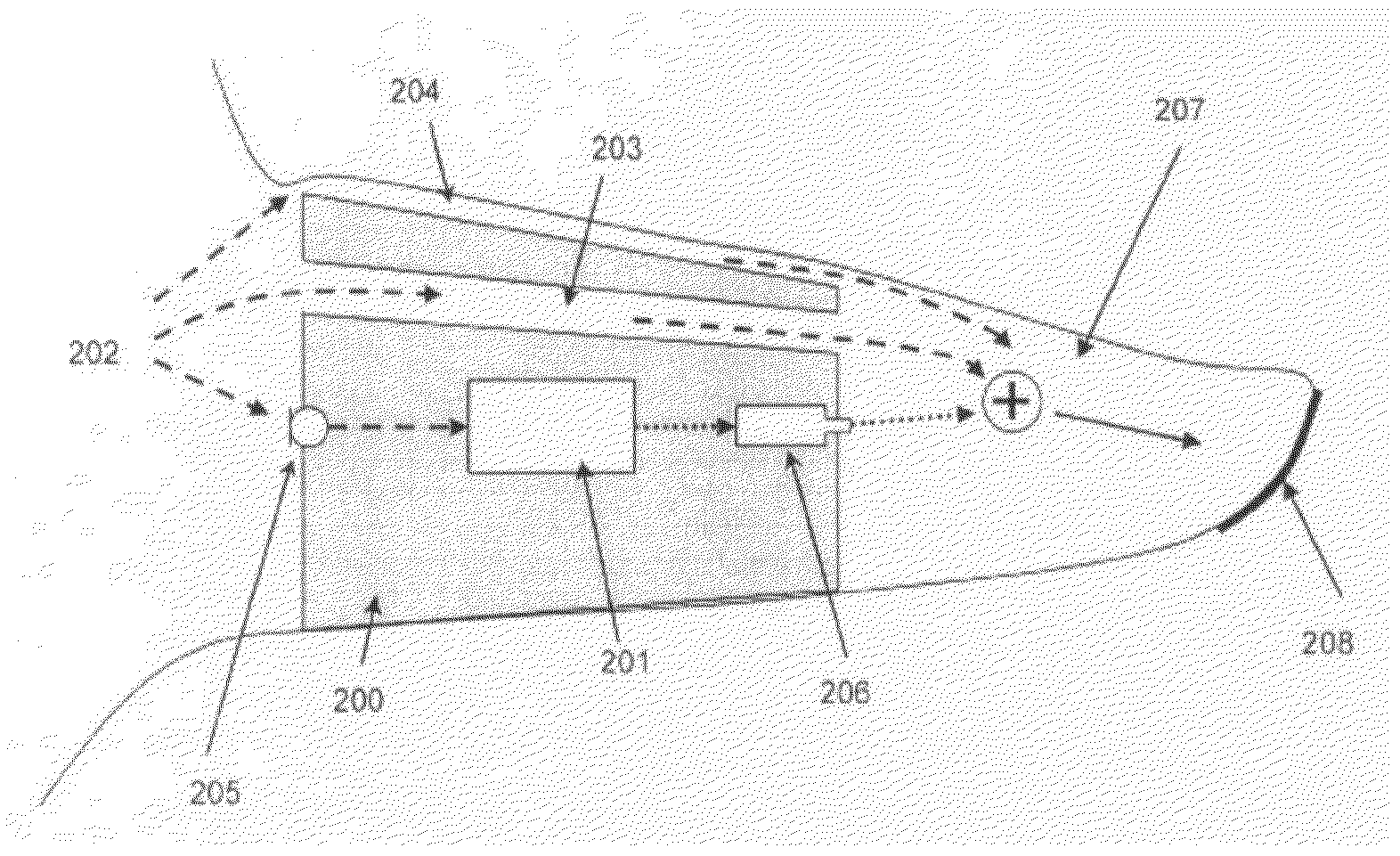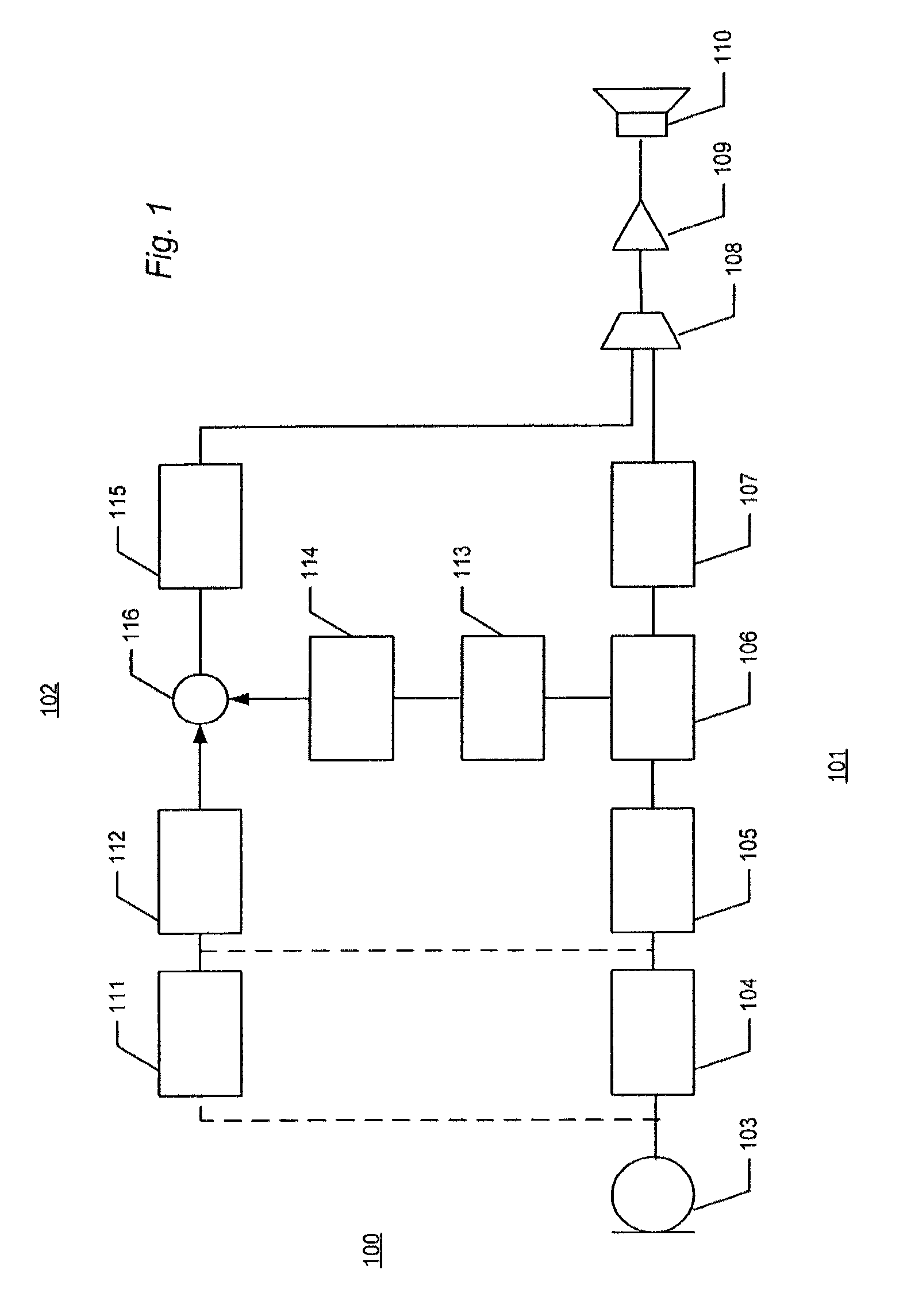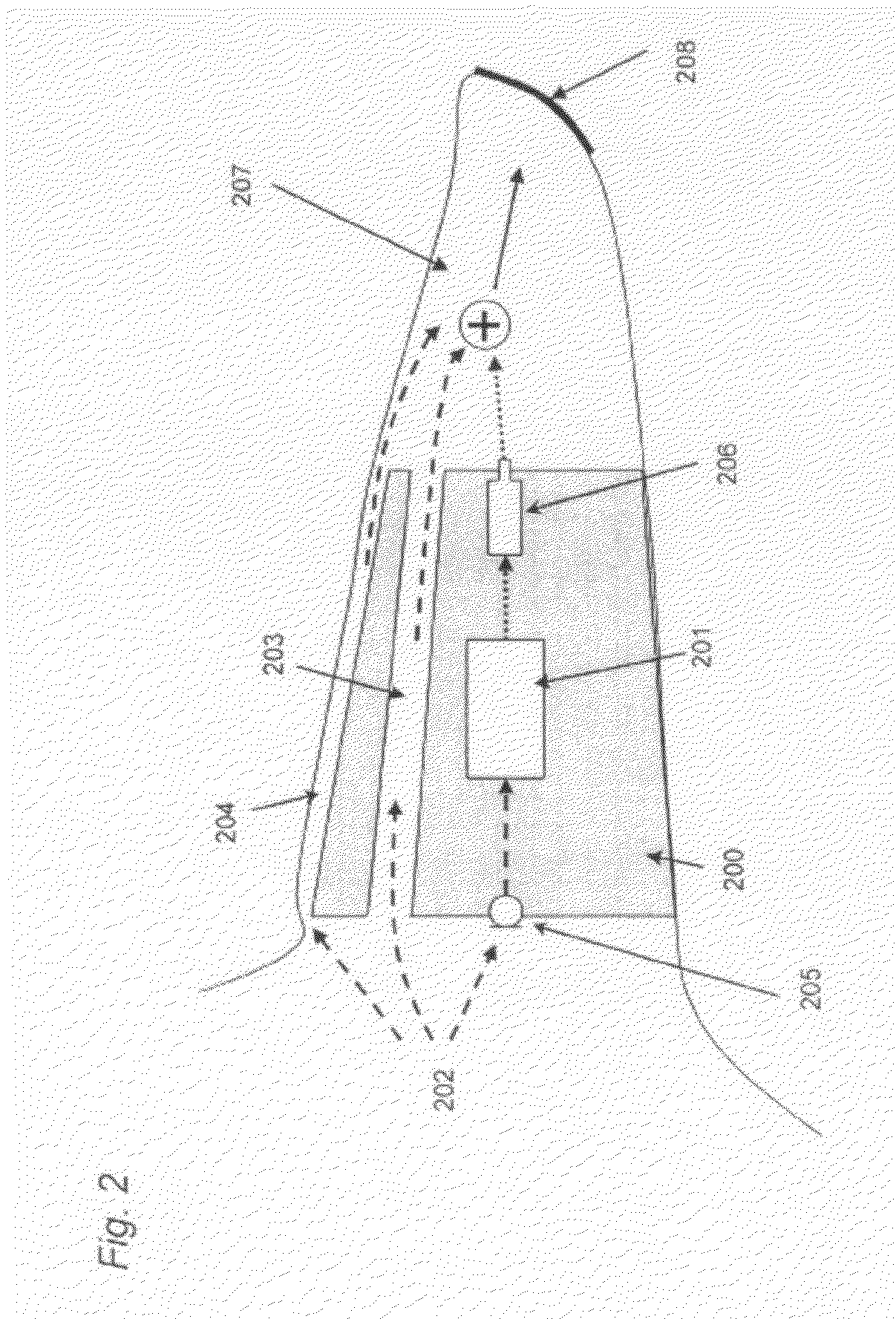Active noise cancellation in hearing devices
a technology of active noise and hearing device, which is applied in the field of active noise cancellation of hearing device, can solve the problems of unsatisfactory, unsatisfactory, and attenuation of sound signals, and achieve the effects of reducing acoustic signals, reducing noise contributions from a specific frequency range, and reducing nois
- Summary
- Abstract
- Description
- Claims
- Application Information
AI Technical Summary
Benefits of technology
Problems solved by technology
Method used
Image
Examples
Embodiment Construction
[0063]In the following description, reference is made to the accompanying figures, which show by way of illustration how the invention may be practiced.
[0064]FIG. 1 shows a hearing device 100 combining a digital hearing aid circuitry 101 and an analogue ANC system 102.
[0065]The hearing aid circuitry part 101 comprises a signal path comprising one input transducer 103, e.g. a microphone, which points towards the ambient space surrounding the hearing device user and which converts an ambient sound entering the ear of the user from the ambient space to an electric signal. Even though one input transducer is shown in the figure, it is understood that there can be more than one input transducer and more than one signal path.
[0066]The electric signal is communicated to a gain stage (G1) 104 in which the electric signal is amplified. From the gain stage (G1) 104 the signal is communicated to an analogue-to-digital (A / D) converter 105, which converts the amplified analogue electric signal t...
PUM
 Login to View More
Login to View More Abstract
Description
Claims
Application Information
 Login to View More
Login to View More - R&D
- Intellectual Property
- Life Sciences
- Materials
- Tech Scout
- Unparalleled Data Quality
- Higher Quality Content
- 60% Fewer Hallucinations
Browse by: Latest US Patents, China's latest patents, Technical Efficacy Thesaurus, Application Domain, Technology Topic, Popular Technical Reports.
© 2025 PatSnap. All rights reserved.Legal|Privacy policy|Modern Slavery Act Transparency Statement|Sitemap|About US| Contact US: help@patsnap.com



